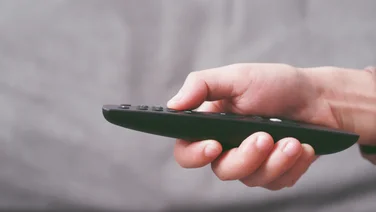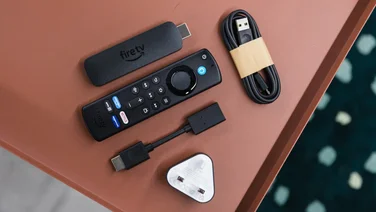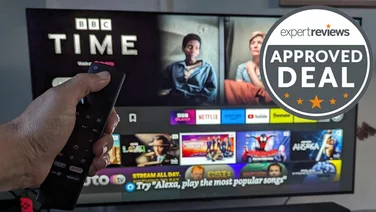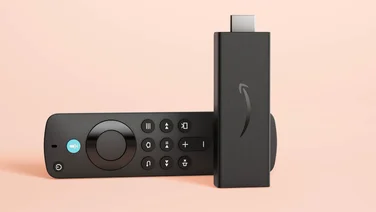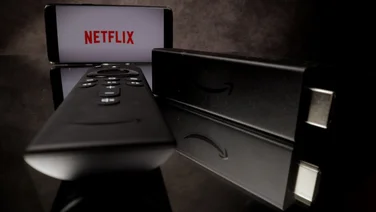To help us provide you with free impartial advice, we may earn a commission if you buy through links on our site. Learn more







- Reasonably priced
- Optional Ethernet connectivity
- Must be plugged into the mains
- No support for Amazon Video
The Chromecast Ultra is a peculiar product. On paper, it ought to be a must-buy: it’s the cheapest 4K HDR TV streamer on the market and it inherits all the things that made the original and second-generation Chromecasts great.
Just like its predecessors, the Chromecast Ultra makes the business of streaming video and audio from your phone, laptop or tablet to your TV incredibly simple, and the library of Chromecast apps is enormous. With a few notable exceptions, if you can stream something to your phone, you can cast it to your TV via Chromecast.
Yet in many respects, the Chromecast Ultra is a pointless product, introduced to solve a problem that simply doesn’t exist.
Chromecast Ultra review: Price and competition
I’ll get to the reasons behind why I think the Chromecast Ultra isn’t worth buying in a minute. For now, though, the good news. This is currently the cheapest 4K media player or streamer around.







It’s less expensive than any 4K Blu-ray player, including the Xbox One S; it’s £10 cheaper than the Amazon Fire TV, which doesn’t handle HDR; it’s far more cost-effective than the Nvidia Shield TV (2017); and it’s certainly a cheaper way to get Ultra HD TV than stumping up for a Sky Q or BT TV contract.
Chromecast Ultra review: Content, content, content
So, why is the Chromecast Ultra pointless? Principally, because anyone who owns a 4K TV right now will almost certainly have all the major sources of 4K content covered via embedded smart TV apps.
The killer blow, however, is that most smart TVs are likely to have broader coverage than the Chromecast Ultra. Take the TV I tested it on – a 49in Philips 49PUS6401. It has Netflix, YouTube and Amazon Video apps, which covers all your major sources of streamed 4K content today. The only reason you might consider the Chromecast Ultra is that, currently, Philips’ Netflix app doesn’t support HDR.







While Google and Amazon refuse to play nice with each other, that puts the Chromecast Ultra at something of a disadvantage. Another irritation is that Google has yet to unlock its 4K content on Google Play Movies in the UK.
The question is, then, why on earth would you buy a Chromecast Ultra? Possibly, if you don’t have a Chromecast already, you’d like one and you want to future-proof your purchase; maybe, if you really dislike the apps on your TV and prefer to control everything via your smartphone; but definitely not because you’re after extra sources of 4K content.
Chromecast Ultra review: Setup, features and function
That’s a bit of a shame because technically, the Chromecast Ultra is a capable streamer that works every bit as well as its Full HD and audio-only counterparts.
Getting it hooked up is a little more involved because, unlike previous Chromecasts, the Chromecast Ultra can’t be powered via a spare USB port on your TV. Instead, it must be plugged into a wall socket via the bundled USB mains adapter. It seems 4K streaming is a little more power-hungry than Full HD.







You do get the option of connecting via Ethernet in addition to Wi-Fi, though, via a port in the mains adapter – useful if your Wi-Fi at home isn’t strong enough to stream 4K. (The requirement is around 25Mbits/sec.)
Once you’ve done that, it’s plain sailing. The disc-shaped Ultra is a little larger and thicker than the Chromecast 2, but it’s just as easy to find a place for behind your TV, thanks to the integrated HDMI extension ribbon.
Finally, you download the Google Home app. This detects the Chromecast straight away and takes you through the setup routine, step by step. You’ll be up and running in minutes.
One thing to note is that with some TVs in the UK (the Philips 49PUS6401 is a case in point) you might need to set the Chromecast Ultra to 50Hz mode before using it. I wasn’t able to see the setup screen on the TV at all until I’d flicked that switch.
Chromecast Ultra review: Performance
Casting 4K to your TV from your smartphone, tablet or laptop is as simple as it is with any other Chromecast. Just look for the Google Cast logo, tap it, select your Chromecast and your stream will appear on screen after a few seconds.
The beauty of the Chromecast system is that at this point you can go back to using your phone as normal to answer phone calls, browse the web or use any other app. The Chromecast handles everything else, pulling the stream from the internet, decoding it and piping it through to your TV. And you can still control the volume, pause the stream and scrub back and forth using your phone.







The only small frustration is that it can take a little longer – around 30 or 40 seconds – for streams to flick into full 4K. Once it does this, however, the quality of the image is great, especially HDR content. The first TV show I tried was Marco Polo – a Netflix-only production – and its many dark palace scenes looked particularly moody and crisp, with candle-light gleaming fiercely out of the murky shadows.
As I mentioned above, you’ll need around 25Mbits/sec of broadband connection to stream in 4K, but this shouldn’t be an issue for most. It might be a problem if your TV is sitting in a Wi-Fi dead spot, but most modern routers should be capable of delivering the required bandwidth, even over moderate distances.
Chromecast Ultra review: Verdict
I like – no, I love – Google’s Chromecast devices. They’re simple to use, a doddle to set up and they work beautifully well, but the Chromecast Ultra is the first one I’ve had to pause and think hard about recommending, and that’s nothing to do with how well or how badly it works.
It’s simply because the apps on your 4K TV will almost certainly deliver a greater breadth of 4K content right now, including Amazon Video, and they’re free (aside from subscription fees, of course).
Couple that with a price that’s more than double the Full HD Chromecast and it’s no longer a purchase you can make without thinking. The £30 Chromecast 2 pulls that feat off magnificently, as does the Chromecast Audio, but the Ultra? I think I’ll pass for now.

